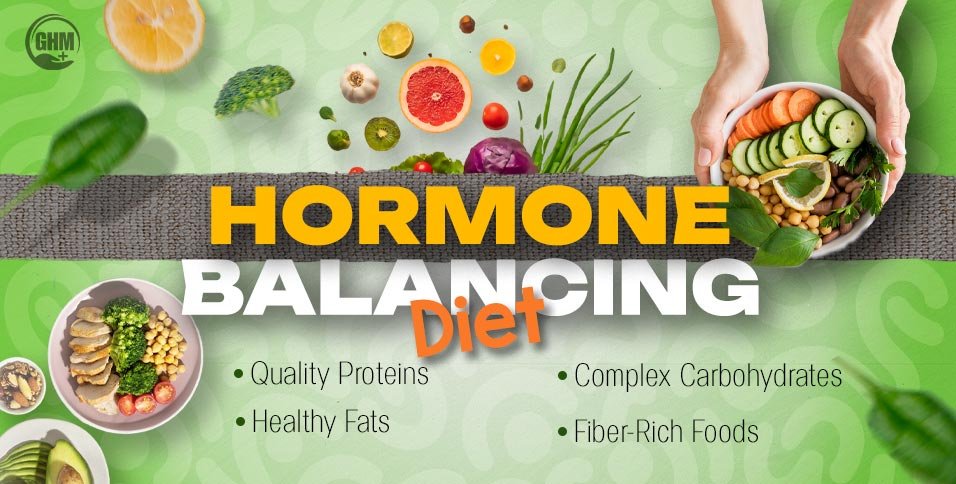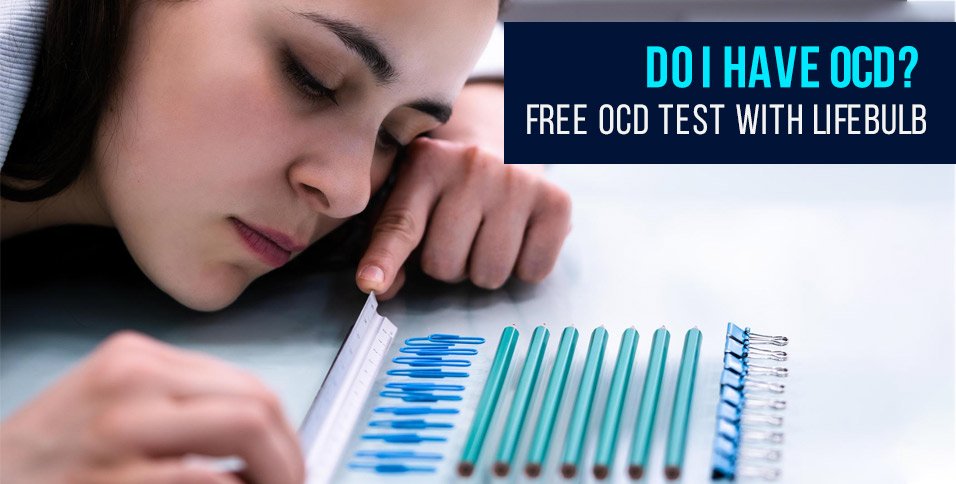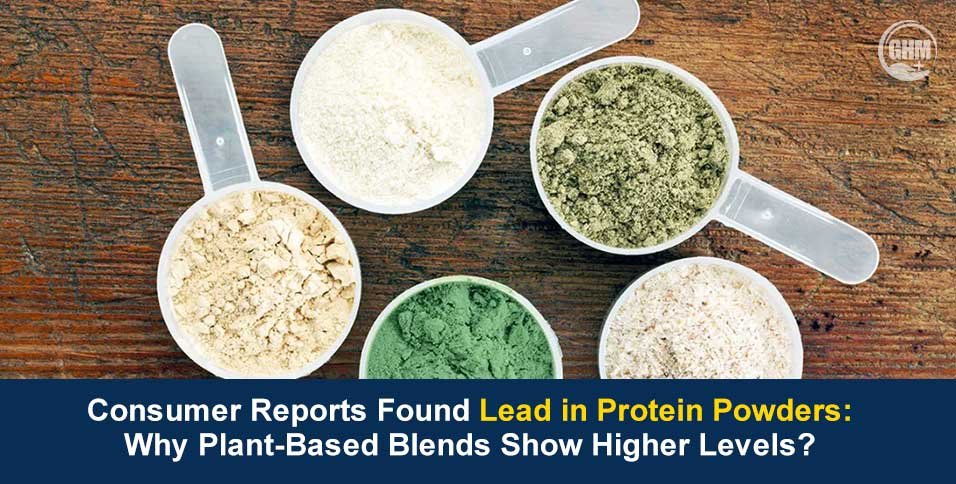Ever wonder why some days you feel clear-headed, full of energy, and just… right? And then, suddenly, you’re drained for no reason? Here’s the twist: it’s not always stress or sleep. Often, it’s food quietly steering the show. Your body’s hormones are those tiny messengers who actually control your mood, energy, and even how well you sleep. And the food you eat? It talks to them daily. That’s where a hormone balancing diet comes in. Not a fad. Not a fix-all. Just a smarter, steadier way to eat that supports how your body naturally works.
This blog breaks down how key foods nourish you, what to limit, and simple habits that make a big difference. No crash courses—just clear, practical strategies.
(Disclaimer: This blog is for informational purposes only. Always consult a healthcare professional for personalized advice.)
Let’s get into it.
The Building Blocks: Key Nutrients for Overall Vitality
When building a strong foundation for your health, focusing on nutrient-dense foods is key. These foods not only support your daily energy and immunity but also contribute to a hormone balancing diet by fueling critical bodily functions.
- A. Quality Proteins: Fueling Your Body’s Foundation
Proteins do more than just help you build muscle—they’re the building blocks of life. They support tissue repair, enzyme function, immune strength, and yes—hormone regulation. Without adequate protein, your body may struggle to produce key hormones like insulin and growth hormone. That’s why a hormone balancing diet always starts with quality protein.
Best sources include:
- Lean meats like chicken or turkey
- Fish rich in omega-3 (salmon, sardines)
- Eggs
- Tofu and legumes like lentils or black beans
- Nuts and seeds for snackable protein
Pro tip: Try to include a protein source in every meal. Scrambled eggs for breakfast, chickpea salad for lunch, and grilled fish at dinner—simple choices can fuel your hormonal engine all day long.
- B. Healthy Fats: Essential for Many Bodily Functions
Think of fats as the spark plugs of your hormonal system. Healthy fats help absorb vitamins, build cell membranes, and support hormone synthesis, especially estrogen and testosterone. And yet, many people still fear fat due to old diet myths.
Smart fat sources include:
- Avocados and olive oil
- Almonds, walnuts, and pumpkin seeds
- Chia, flax, and hemp seeds
- Fatty fish like mackerel or sardines
Tip that works: Add a tablespoon of ground flaxseed to your oats, or a few slices of avocado to toast. These small tweaks help maintain a steady hormonal rhythm—without overloading your calories.
Remember, cutting out fat entirely can backfire on your hormone health. The key is choosing the right kind.
- C. Complex Carbohydrates: Sustained Energy for Your Day
Carbohydrates, especially the complex kind, are often misunderstood. But your body—and your hormones—need them. Complex carbs release energy slowly, supporting stable insulin levels, reducing sugar cravings, and feeding gut bacteria, which indirectly supports estrogen metabolism.
Top choices include:
- Quinoa, brown rice, and whole wheat
- Oats and barley
- Fruits like berries and apples
- Root vegetables like sweet potatoes and carrots
Live tip: Swap out white bread or sugary cereal with oatmeal topped with fruit and seeds. This single switch improves satiety, supports cortisol balance, and fuels a calmer, more focused day.
A hormone balancing diet is not about cutting carbs—it’s about choosing the right ones.
- D. Fiber-Rich Foods: Supporting Digestive Wellness
Fiber acts like your body’s detox crew. It helps flush out excess hormones like estrogen and supports a healthy gut microbiome, which is increasingly linked to hormonal balance. Many hormonal imbalances, especially in women, are rooted in poor gut health—and fiber helps correct that.
Fiber-packed foods include:
- Berries, pears, apples
- Lentils, chickpeas, black beans
- Oats, chia seeds, and flaxseeds
- Veggies like broccoli, spinach, and carrots
Practical tip: Start your morning with chia pudding or a green smoothie. Add lentils or beans to lunch, and keep nuts handy as snacks.
Most adults need 25–30 grams of fiber per day, yet average intake is far lower. Increase your intake slowly and drink plenty of water to support digestion.
Foods to Embrace: Supporting Your Body’s Natural Rhythms
“Your Hormones Listen to What You Eat—So Feed Them Right”
- A. Colorful Fruits and Vegetables:
Bright, colorful produce isn’t just pretty on your plate—it’s a secret weapon for hormonal health. Fruits and vegetables are rich in antioxidants, vitamins, and minerals, all of which your body needs to function at its best. These nutrients protect your cells from stress, boost detox pathways, and keep inflammation in check—all essential for a well-functioning endocrine system.
Top hormone-friendly picks include:
- Berries (high in vitamin C and antioxidants)
- Leafy greens like spinach and kale
- Cruciferous vegetables such as broccoli and cauliflower
- Bell peppers and carrots for vitamin A and fiber
A colorful plate signals a variety of nutrients, which is exactly what a hormone balancing diet needs. So next time you shop, aim for a rainbow—it’s one of the simplest ways to support your body’s internal rhythm naturally.
- B. Fermented Foods:
Fermented foods are tiny powerhouses of health. They contain probiotics, or good bacteria, that help your gut thrive. Why does this matter for your hormones? Because your gut health influences how your body breaks down and clears out used hormones—especially estrogen.
Smart fermented food choices:
- Yogurt with live cultures
- Kefir (a fermented milk drink)
- Sauerkraut and kimchi
- Miso and tempeh
Including just one serving of fermented food daily can support smoother digestion, clearer skin, and more stable moods—key markers of hormonal balance. That’s why any effective hormone balancing diet includes at least one fermented food source. A healthy gut lays the foundation for a healthier, more stable hormonal cycle.
- C. Nuts and Seeds:
If you’re looking for a crunchy, satisfying snack that supports hormonal stability, nuts and seeds are your go-to. They’re full of healthy fats, fiber, protein, and essential minerals like magnesium, zinc, and selenium—all of which support hormone production, especially thyroid and sex hormones.
Best options to rotate through your week:
- Flaxseeds and chia seeds (for omega-3s and fiber)
- Almonds and walnuts (rich in vitamin E and healthy fats)
- Pumpkin seeds (high in zinc and magnesium)
Try sprinkling them on your oats, blending them into smoothies, or just eating them raw. When you include a mix of nuts and seeds, you give your body what it needs to keep your hormones steady. Every handful is a tiny step toward a better hormone balancing diet.
Foods to Reconsider: Supporting Your Body’s Optimal Function
“It’s Not Just About What You Add—It’s Also About What You Avoid”
- A. Added Sugars and Refined Carbohydrates:
Sugary foods may give you a quick boost, but they come with a heavy hormonal cost. These include sugary drinks, candies, white bread, and pastries. They cause sudden spikes in blood sugar, followed by crashes that leave you tired and irritable. Over time, these crashes can stress your adrenal glands and disrupt insulin balance.
Consistently high sugar intake can throw off estrogen, insulin, and even cortisol rhythms. This is why most hormone balancing diet plans recommend cutting back on added sugars. Instead of fueling your body, refined carbs confuse your internal rhythm. Switch to whole carbs like oats, fruits, and brown rice to keep energy steady and hormones happy.
- B. Processed Foods and Trans Fats:
Processed snacks and foods with trans fats may be convenient, but they do your hormones no favors. Items like fast food, packaged snacks, and anything with hydrogenated oils often lack nutrients and trigger inflammation in the body.
Inflammation disrupts hormone signals, especially those tied to thyroid and insulin. Even moderate consumption of trans fats has been linked to poor fertility outcomes and rising cortisol levels. That’s why removing trans fats is a non-negotiable in any well-designed hormone balancing diet. Instead, try to eat clean, unprocessed meals. The more real your food is, the better your body responds.
- C. Excessive Caffeine and Alcohol (in some cases):
Caffeine and alcohol aren’t always villains—but overdoing them can cause hormonal chaos. Too much caffeine disrupts sleep quality, increases cortisol, and leaves you jittery rather than energized. Alcohol, in excess, impacts liver function, which plays a crucial role in hormone detox.
A balanced approach matters. One cup of coffee or an occasional glass of wine may not be harmful. But when these become daily habits in excess, your hormone balancing diet starts to lose its rhythm. Instead, hydrate with water, herbal teas, or mineral broths. If you drink, limit it to a few times a week—and always stay mindful of how your body feels the next day.
Beyond the Plate: Lifestyle Factors for Holistic Well-being
“Your Hormones Don’t Just Listen to Food. They Listen to Everything.”
A well-designed hormone balancing diet is only one part of the equation. What happens outside the kitchen matters just as much. Daily choices—how we move, sleep, and manage stress—deeply influence how balanced our internal systems remain.
- A. Stress Management: Techniques like mindfulness or gentle exercise.
Stress doesn’t just drain you—it directly affects cortisol, one of your body’s core hormones. Chronic stress pushes cortisol levels up, throwing off everything from sleep cycles to insulin sensitivity. Thankfully, simple tools like deep breathing, walking outdoors, or 10 minutes of mindfulness can make a real difference. Even journaling or gentle yoga helps reset your rhythm. Managing stress well makes any hormone balancing diet work better.
- B. Adequate Sleep: Importance for rest and recovery.
Your body repairs, restores, and regulates hormones while you sleep. Missing out on sleep impacts melatonin, growth hormone, and leptin, which controls hunger. Most adults need 7–9 hours nightly. Going to bed and waking up at the same time daily strengthens your body’s internal clock. With good sleep, your hormone responses become more predictable and efficient.
- C. Regular Movement: General physical activity.
You don’t need intense gym sessions to make a difference. Even walking 30 minutes a day helps balance hormones like insulin, estrogen, and testosterone. Moving regularly also reduces inflammation and boosts mood. Think of it this way: exercise helps your food work smarter. A hormone balancing diet paired with consistent movement becomes twice as effective.
Practical Tips for Incorporating a Hormone Balancing Diet
“Start simple, stay consistent, and let your food work for you.”
Adopting a hormone balancing diet doesn’t mean giving up your favorite meals or making drastic changes overnight. Instead, it’s about building smart habits that support your body’s rhythm—step by step.
- A. Start Small
Don’t change everything at once. Begin by adding one high-quality protein or leafy green to your daily plate. Small, steady shifts create lasting change. For example, swap sugary snacks with mixed nuts or fruit.
- B. Meal Planning
Planning meals reduces decision fatigue. Cook in batches, prep veggies in advance, and use your freezer wisely. Prepping three days ahead keeps you consistent without stress. A bit of prep now saves you time—and helps you stick to a hormone balancing diet long term.
- C. Hydration
Water supports digestion, circulation, and hormone transport. Aim for 8–10 glasses daily. Add lemon or cucumber slices for flavor. Dehydration can mimic hunger or trigger fatigue. So, sip throughout the day, not just when thirsty.
- D. Listen to Your Body
Pay attention after meals. Feeling sluggish? Bloated? Energized? These cues tell you what works. Mindful eating—not multitasking—helps you notice patterns and adjust. Over time, your body guides you to the right foods naturally.
- E. Focus on Variety
Different nutrients support different hormones. Rotate whole foods—colorful vegetables, seasonal fruits, varied proteins, and grains. Eating the same thing daily may cause imbalances. Diversity keeps your meals exciting and your body thriving.
Key Takeaways
Here’s what really stands out after trying to follow a hormone balancing diet: it’s not about chasing perfection — it’s about small, smart choices adding up. Swapping sugary snacks for nuts didn’t just reduce the crash — it actually helped me focus better during the day. Adding fermented foods felt weird at first, but over time, digestion improved. No bloating, no post-meal fog.
But the real change? Sleep. Consistent meals with protein, fiber, and healthy fats made a noticeable difference in how deeply I slept and how steady my energy felt the next day. It’s like the body starts trusting you again when you feed it right.
Still, it’s not a one-size-fits-all journey. What worked for me may not work exactly the same for you. That’s where a qualified healthcare professional becomes important — they help decode your body’s unique needs.
Start slow, stay curious, and listen to your body. That’s the real secret.



















